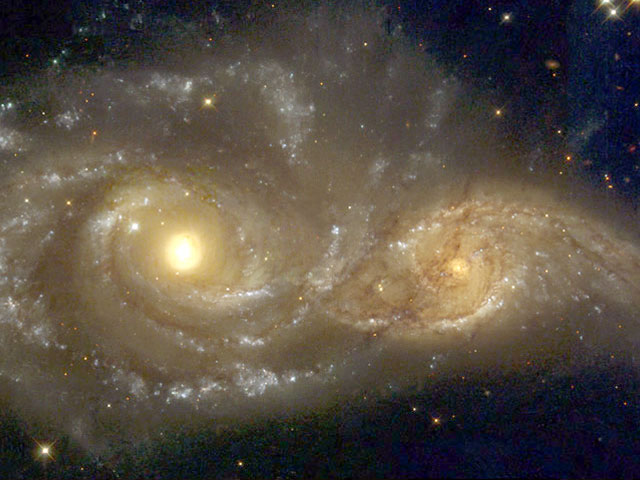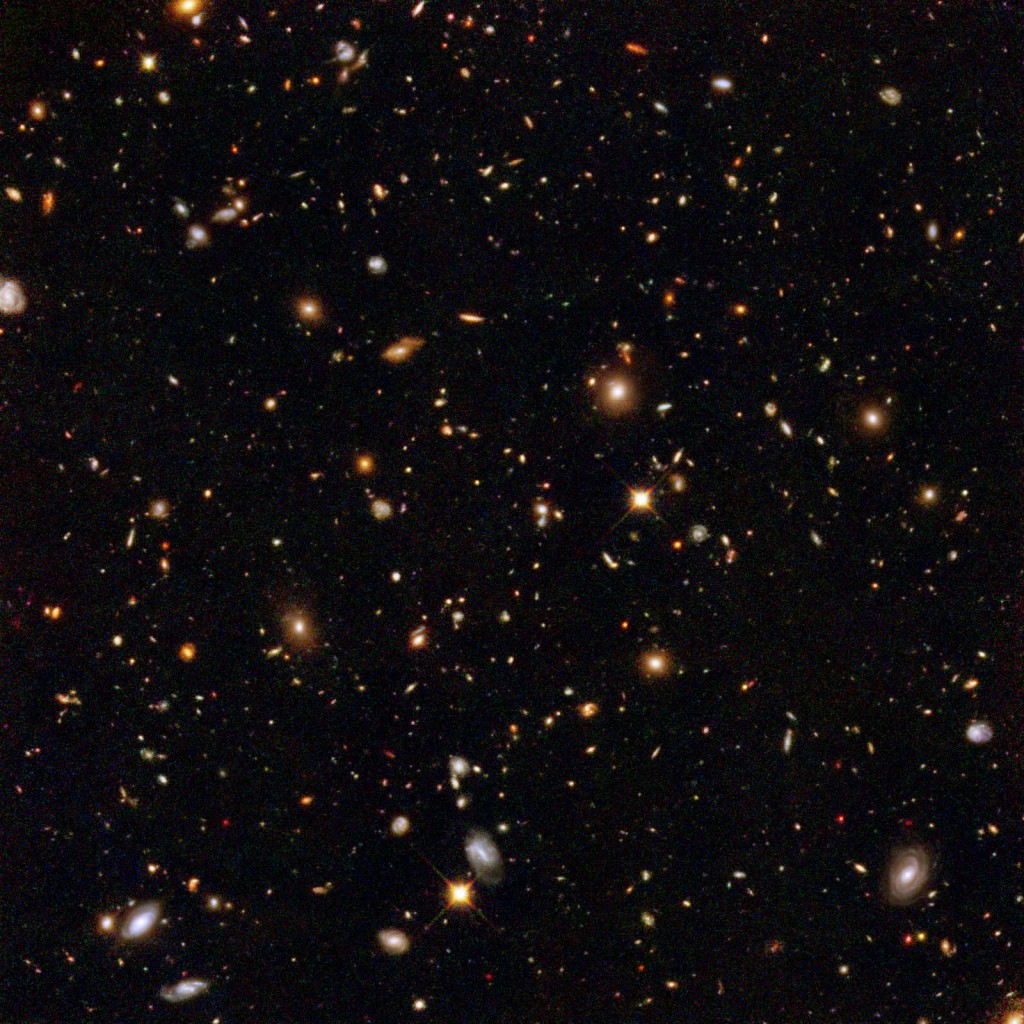
Two galaxies colliding.
Credit: Debra Meloy Elmegreen (Vassar College), et al., & the Hubble Heritage Team (Association of Universities for Research in Astronomy/Space Telescope Science Institute/NASA)
Theoretical physics doesn’t come easily to me, but Sean Carroll manages to put more of it across than I’d have thought possible for someone whose math education stopped at intermediate algebra. His book From Eternity to Here: The Quest for the Ultimate Theory of Time asks the question: Why does time only move in one direction?
The answer, says Carroll, is connected to the phenomenon of entropy, which also goes only one way: it increases. Exploring this connection leads him through some of the deepest questions scientists ponder: relativity, spacetime, quantum physics, the nature of the universe, and, ultimately, the meaning of human life. Why are we here? Is it by design of someone or something? Carroll rejects the argument from design. He sees us “not as a central player in the life of the cosmos, but as a tiny epiphenomenon.” Meaning and purpose don’t arise from any “laws of nature” created by a divinity; they’re for us to determine. And he takes pride in the scientific struggle to understand those laws.
But I have another question: should we even be asking?
It turns out that these same grand questions were hot philosophical topics during the Buddha’s time. Many people wanted him to answer them, but he refused. There is a list of 10 of these “unanswerable” questions (14 in some traditions), including:
- Is the universe eternal or not?
- Is it finite or infinite?
- Are the soul and body the same thing or different?
- Does an enlightened person still exist after death?
And so on. The Buddha explained that trying to answer these questions doesn’t help end suffering but actually increases it, and furthermore doesn’t lead to awakening, or enlightenment. The questions are only a distraction.
Nor is he the only sage to take this position. A very highly realized teacher I was fortunate to see several times—said to be enlightened himself—was asked, “When did the universe begin?” He responded, “The question is meaningless: there is no time and space.” When someone else wanted to know, “What is the meaning of life?” he said, “You can’t ever know the answer to that, so why think about it?”

Never before seen galaxies that existed shortly after the Big Bang, billions of years distant, photographed by the Hubble telescope. Credit: NASA, European Space Agency, S. Beckwith (STScI), and the HUDF Team. Click image for more info from HubbleSite.
So why did I want to read the Carroll book? Because I would like to know the nature of the universe, especially since that might shed light on the nature of the self, another of those unanswerable questions that interests me even more.
I’ve struggled a bit with this desire to know, and concluded that my interest isn’t just metaphysical; it’s practical. That is, I don’t want simply to define the self in absolute terms, but still more to understand how the ways we conceptualize it affect us, as individuals and as a society. We may aspire to the realm of the absolute, but we also lead everyday, relative lives, and on this plane how we define our self is important, because it determines how we live, and our impact on everyone around us.
No doubt knowing the answers to the unanswerable questions would enable us to construct an absolute definition of ourselves. But since we can’t, best to admit that all the definitions we have made are relative. So perhaps the best answer to the questions in the title of this post is: Who knows?

Lovely, thought-provoking essay. I’m taking a course online – from Stanford University, Robert Sapolsky on Neurobiology and Behavior. And I find my mind swimming in the universe of a single cell. I remember studying cell structure in college in 1960, and learning the parts and functions of that simple element. Of course, as scientists unravel DNA and its intricacies on a daily basis, I’ve gotten a bit behind. And the simple structure I studied then turns out to be a world as intricate and blazing as the swirling universe in your essay. The thing that stands out so far: We are our mother’s children, deeply and truly. The 24 nuclear chromosomes our fathers have given us are the full and complete extent of their gifts. Our mothers gave us not just their half of the nuclear material, but the inner cell materials, including mitochondria and transcription elements and the methyl groups, which it turns out are the things that turn on and off all our capacities. They also react to the external world, even when we are in the womb, and truly begin to form the shape of the selves we become. It is like looking at the night sky and seeing the Egyptian goddess, the arching figure of the mother! Guess I need a blog. . .
Let me know when you publish the next one, Stef.
On the universe, the wonderful 19th century atheist I’m writing about, Ernestine Rose, makes very similar points except from the atheist perspective, i.e. since we’re still ignorant about things like the start, how, etc. of the universe, let’s focus on humanity and making life better here for others. She concludes that atheists are better because they do things for their own sake, rather than any religious reward or punishment.